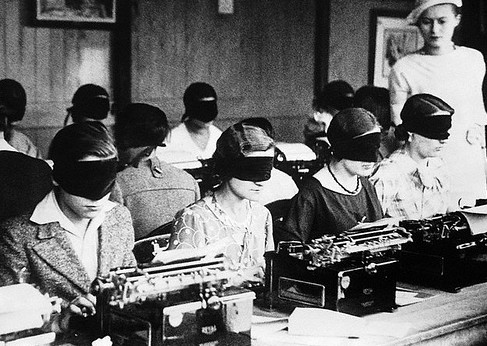In both the CBS News video I embedded yesterday and in the recent Nieman Reports article by Celeste LeCompte, an argument is made that the automation of newsrooms, a process that began back in the 1970s, is a good thing that’ll free up the hands of journalists to do more important work. Well, that’s part of the story.
Seasoned reporters who could do more than an inverted triangle piece always did so. This arrangement isn’t a new occurrence courtesy of the Second Machine Age. Those small-scale stories were mostly a training ground for cubs to practice a formula and grow beyond it. Software taking on this task will mean fewer hires and less-on-the-job learning, ultimately providing a smaller pool of potential talent and fewer eyes, ears and voices–at least on the professional end of things. And that, of course, doesn’t even begin to speak to the missteps, ethical and otherwise, that will occur.
I’m not saying such software isn’t a useful tool; it certainly is. But as is always the case with technology, something’s lost as something’s gained.
The Nieman Reports opening:
Philana Patterson, assistant business editor for the Associated Press, has been covering business since the mid-1990s. Before joining the AP, she worked as a business reporter for both local newspapers and Dow Jones Newswires and as a producer at Bloomberg. “I’ve written thousands of earnings stories, and I’ve edited even more,” she says. “I’m very familiar with earnings.” Patterson manages more than a dozen staffers on the business news desk, and her expertise landed her on an AP stylebook committee that sets the guidelines for AP’s earnings stories. So last year, when the AP needed someone to train its newest newsroom member on how to write an earnings story, Patterson was an obvious choice.
The trainee wasn’t a fresh-faced j-school graduate, responsible for covering a dozen companies a quarter, however. It was a piece of software called Wordsmith, and by the end of its first year on the job, it would write more stories than Patterson had in her entire career. Patterson’s job was to get it up to speed.
Patterson’s task is becoming increasingly common in newsrooms. Journalists at ProPublica, Forbes, The New York Times, Oregon Public Broadcasting, Yahoo, and others are using algorithms to help them tell stories about business and sports as well as education, inequality, public safety, and more. For most organizations, automating parts of reporting and publishing efforts is a way to both reduce reporters’ workloads and to take advantage of new data resources. In the process, automation is raising new questions about what it means to encode news judgment in algorithms, how to customize stories to target specific audiences without making ethical missteps, and how to communicate these new efforts to audiences.
Automation is also opening up new opportunities for journalists to do what they do best: tell stories that matter. With new tools for discovering and understanding massive amounts of information, journalists and publishers alike are finding new ways to identify and report important, very human tales embedded in big data.

